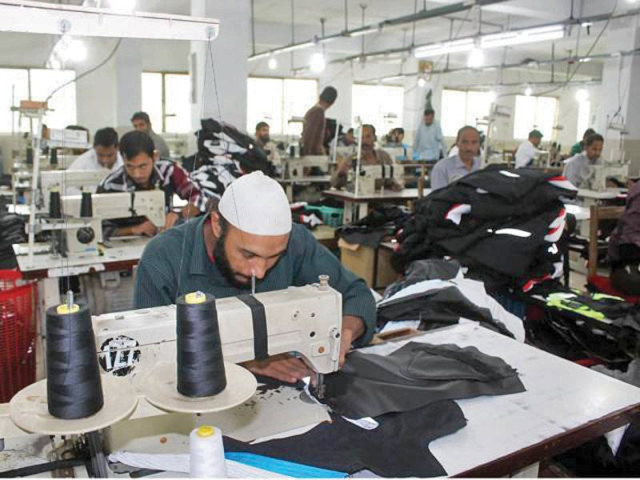SMEs, the engine of growth, ignored in Pakistan
Banking credit flow is tilted in favour of large corporate firms.

Most small businesses finance expansion projects through their own sources of funds or informal credit which is very expensive. photo: file
These economies include Japan, South Korea, Taiwan and India. But Pakistan’s economy has largely ignored the sector, although the country has a very strong case for boosting SME growth.
SMEs are critical as they are an efficient vehicle for transferring the fruits of growth to different economic tiers of the society. These enterprises help improve standards of living of the common man, generate employment and reduce inequality in the country.
They also provide export goods and at times provide valuable inputs to large exporting organisations. Hence, they have a significant role in improving the trade balance and current account balance of a country.
Digitising SMEs means digitising the national economy
Despite these benefits, over the past 70 years, this economic segment has been largely ignored by the policy-makers.
According to a recent report of the State Bank of Pakistan (SBP), SMEs hold only 6% of the banking credit portfolio while the major chunk of around 66% goes to large corporates.
It must be obvious that availability of banking credit serves as a blood line for any business and credit flow in Pakistan is biased in favour of large corporate firms.
Due to this disparity, the gap between the rich and the poor has widened beyond imagination. Small firms have vanished and we have been witness to the birth of large business conglomerates in the economy.
These small businesses face a host of challenges. Some of these challenges and constraints are discussed below:
Financial challenges
Banks in Pakistan are generally reluctant to lend to small businesses. Most small businesses finance expansion projects through their own source of funds or informal credit which is very expensive.
According to a report of the Asian Development Bank, historically, only 6% of the credit requirement of SMEs in Pakistan is catered to by the formal banking sector.
Banks have stringent collateral requirements for SMEs. Most lending is done by keeping fixed assets as collateral. Lending against movable assets ie stocks and receivables is a rare occurrence.
These collaterals are a huge barrier, especially to first generation entrepreneurs. They may have profitable ideas and a brave heart to bring those ideas to test the market. However, the collateral requirement becomes an insurmountable cliff between them and the execution of their ideas.
SMEDA launches CPEC awareness campaign
Banks also have plausible reasons for their cautious behaviour. Small ticket-sized SME loans have higher per unit loan costs and higher credit risk. In its report, the SBP highlighted that SMEs have the highest infection ratio. Almost 25% of Pakistan’s SME credit portfolio comprises non-performing loans (NPLs). Basel risk management frameworks have imposed risk-based capital requirements, which make high-risk SME lending a challenge for the banks as well.
Furthermore, recourse through the legal system is cumbersome and time-consuming for banks. Hence, they prefer to lend to large businesses.
Reportedly, 30% of the total banking credit is concentrated in 30 large business groups of the country. This signals very high credit concentration in large businesses.
Infrastructure challenges
Infrastructure includes power generation, road networks, security and communications framework in any economy. The government has not provided necessary infrastructure to businesses in the past, although some good work in the power sector is being done currently.
Infrastructure is important for all businesses, but it is most critical for small firms. Large businesses have the muscle to arrange their own power generation. They also have the resources to arrange outsourced security personnel.
Unfortunately, small businesses do not have enough resources to manage these infrastructural avenues. Therefore, when infrastructure deteriorates as it has in Pakistan, the small businesses are on the farthest most losing end.
Regulatory, documentation challenges
Small businesses find the tedious regulatory documentation as a challenge for their small setups. Again they do not have enough resources to hire qualified chartered accountants and expensive consultants for the resolution of taxation issues.
Dealing with bureaucracy is a tedious task for which time and resources are required. Unfortunately, this situation is a big hurdle to the blooming growth of small firms.
SMEs have generated such good results for growth that certain fast-growing Asian economies have established mandatory benchmarks for SME lending.
A recent SBP report highlights that in Indonesia, SME credit must be at least 20% of the overall portfolio. In Thailand, SME credit must equal 20% of the total deposits.
Pakistan has a bright future ahead. This growth dream can be best realised if young population is given an opportunity to turn its ideas into reality and development of a robust SME policy framework will be a critical step on this road to success.
The writer is a corporate banker and teaches economics
Published in The Express Tribune, August 14th, 2017.
Like Business on Facebook, follow @TribuneBiz on Twitter to stay informed and join in the conversation.



















COMMENTS
Comments are moderated and generally will be posted if they are on-topic and not abusive.
For more information, please see our Comments FAQ